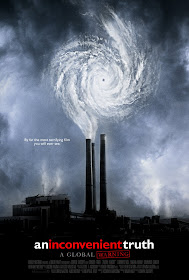Well, well... two holes in the ground with water in 'em. Joking aside, two aquifers containing more water than Sydney Harbour have been found deep within the sandstone on Sydney's outskirts. In a report to be released next week the Sydney Catchment Authority confirms that water source is viable in a drought crisis, but it does not mean our day-to-day water problems are over: :::[SMH]
While good news, don't put off your purchase of a water tank. As the SMH says, 'The combination of climate change and a natural dry cycle may mean that Sydney is facing a water shortage which some predict could last decades.' Large scale engineering simply complements the range of solutions we need to develop to drought proof Sydney in the coming big dry. More on drought solutions: :::[Drought turns Aussie knight historical searching for solutions.]
Other blogs on: water conservation drought sydney global warming climate change
John Ross, the authority's groundwater project manager, says that the quality of water is high with low salinity, "mostly basically equivalent to rainwater". The NSW State Government had announced earlier this year it would turn to aquifers in order to help augment the water supply if dam levels fell below 40 per cent. As you may be able to see from my right hand column Warragamba's level was at 41.8 per cent (at time of writing). All the heavy rain we have been getting lately just did not fall in the damn catchment - same old story. Seven sites were targeted for test drilling and at least two seem suitable for the establishment of large-scale bore fields - the Upper Nepean near Kangaloon, east of Bowral, and Leonay, near Penrith. Nepean may have hundreds of gigalitres and if developed as a ground water supply the catchment plans to pump about 15 billion litres of groundwater a year into nearby creeks and rivers flowing into Nepean Dam, of Sydney and Illawarra use."The volume of groundwater likely to be developed is small (at present) in overall supply terms," the report says, "however, it can reduce the rate of dam depletion and hence is important as a water supply source in severe drought.
"Groundwater should not be seen as a water supply system augmentation. It is too valuable in the context of a drought supplementary supply source for it to be developed as an ongoing source of supply."
While good news, don't put off your purchase of a water tank. As the SMH says, 'The combination of climate change and a natural dry cycle may mean that Sydney is facing a water shortage which some predict could last decades.' Large scale engineering simply complements the range of solutions we need to develop to drought proof Sydney in the coming big dry. More on drought solutions: :::[Drought turns Aussie knight historical searching for solutions.]
Other blogs on: water conservation drought sydney global warming climate change


No comments:
Post a Comment